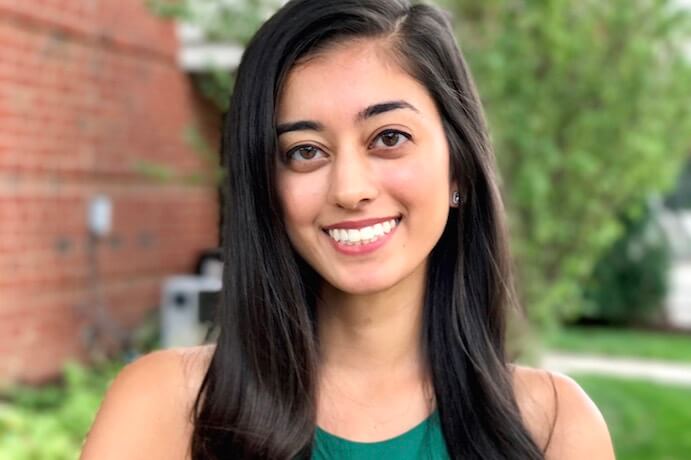Last year, I CARE IF YOU LISTEN partnered with 21CM to create the “New Voices” essay contest, inviting college students of any age to submit essays on the theme of the 21st century musician. We are happy to present our second-place award to Anjali Misra, currently studying at University College Cork in Cork, Ireland, for her examination of Irish traditional music through the lens of a classical violinist.
The Staying Power of Irish Traditional Music
There is a moment of silence after the set ends, and my applause slices through the hush in the room. For a moment, I feel like the newcomer to classical music who didn’t get the memo not to clap between movements of a concerto. I am sitting shoulder to shoulder with a harpist and a fiddler in a dimly lit pub session circle, but I am an outsider here.
In the two fleeting months that have passed since my relocation from Boston to Cork, Ireland, I am finding music everywhere. Recasting myself from classical violinist to Irish traditional music enthusiast has been exhilarating. My immersion has been rapid and deep by choice, and my occasional social missteps are refreshing reminders that I no longer reside in the Western classical sphere.
Nobody else claps — there’s no need for it. The applause is in the quick smiles the players flash at each other before starting the next reel, and in the chorus of understanding laughter that follows when the session leader launches into the tune too quickly and aborts the attempt in favor of a restart.

Photo by Nikola Jovanovic
My rapidly growing obsession with Irish traditional music takes me back and back again to a weekly concert series presented by a society at my university. These days I proudly claim my seat in the second row of the hall and spend the hour entranced. The collectivist nature of the music is palpable even without an instrument in my arms. I learn that these concerts are defined as much by dialogue with the audience between the sets as by the jigs and reels themselves. Every set is framed with opening anecdotes about the tunes’ origins: who and where they are from, and how they earned their charming names. Or, as I hear surprisingly often, a sheepish admission that this tune doesn’t have a name or that it has several, a situation one fiddler characterized as a “musical identity crisis.” These admissions invite the audience into the fold. The well-versed listeners are game for this crowdsourcing of information, and identifying the piece brings glee all around.
I haven’t been around to observe hundreds of years of this tradition. If that were a possibility, I certainly wouldn’t mind. Yet even from my relatively limited exposure, it is plain to see that Irish traditional music straddles a unique divide — it is deeply rooted in folk music, with tunes that are tied to regions as much as they are tied to their composers’ communities — but in the contexts in which I experience it, a modern influence is undeniably present as well.
The widespread popularity of the pub session format is, as it turns out, a relatively recent development from the second half of the 20th century. This practice is the later phase of a longer transition of the popular venues for Irish traditional music shifting from the home and dance floor into urban centers. It is mirrored by a similarly recent expansion from predominantly solo tradition to collaborative group performance.
Photo by Providence Doucet on Unsplash
As a newcomer to Irish traditional music, right now, as a fly on the wall in a pub session, there is no indication of it ever having been done any other way. Yet this sense of existing beyond the bounds of time and space is also the most superficially modern characteristic of this music —even today, it is unabashedly itself.
In a paper entitled “Irish Music Redefined, an Outsider’s Viewpoint,” Erick Falc’Her-Poyroux writes the following with regard to late 20th century changes in Irish traditional music:
“Music making, like any human activity, is a process. When a tradition ceases to evolve it ceases to be a tradition, as it becomes a conscious convention. At that stage, it is ready to be abandoned and to become a museum piece. In fact, every one of the changes mentioned above means the music is still with us, it has survived, it has adapted, when most of the rural traditions of the 19th century have disappeared in the Western world … The reason it has survived is that it has adapted to a new function, in the same way for example that classical music has developed a new function as film music.”
Irish traditional music has persisted because it has changed over time. In a global cultural landscape that is regularly inundated with new material, the last few decades of evolution suggest that this music will be around for quite a while longer — though likely changing a little more along the way.
Anjali Misra hails from Iowa but you can find her in Ireland, earning her MPH as a 2019 George J. Mitchell Scholar. She recently graduated from MIT, where she studied neuroscience and music. Though Anjali is a lifelong violinist, her forays into classical saxophone, Balinese gamelan, and Irish fiddling have extended her love for music manifold.


